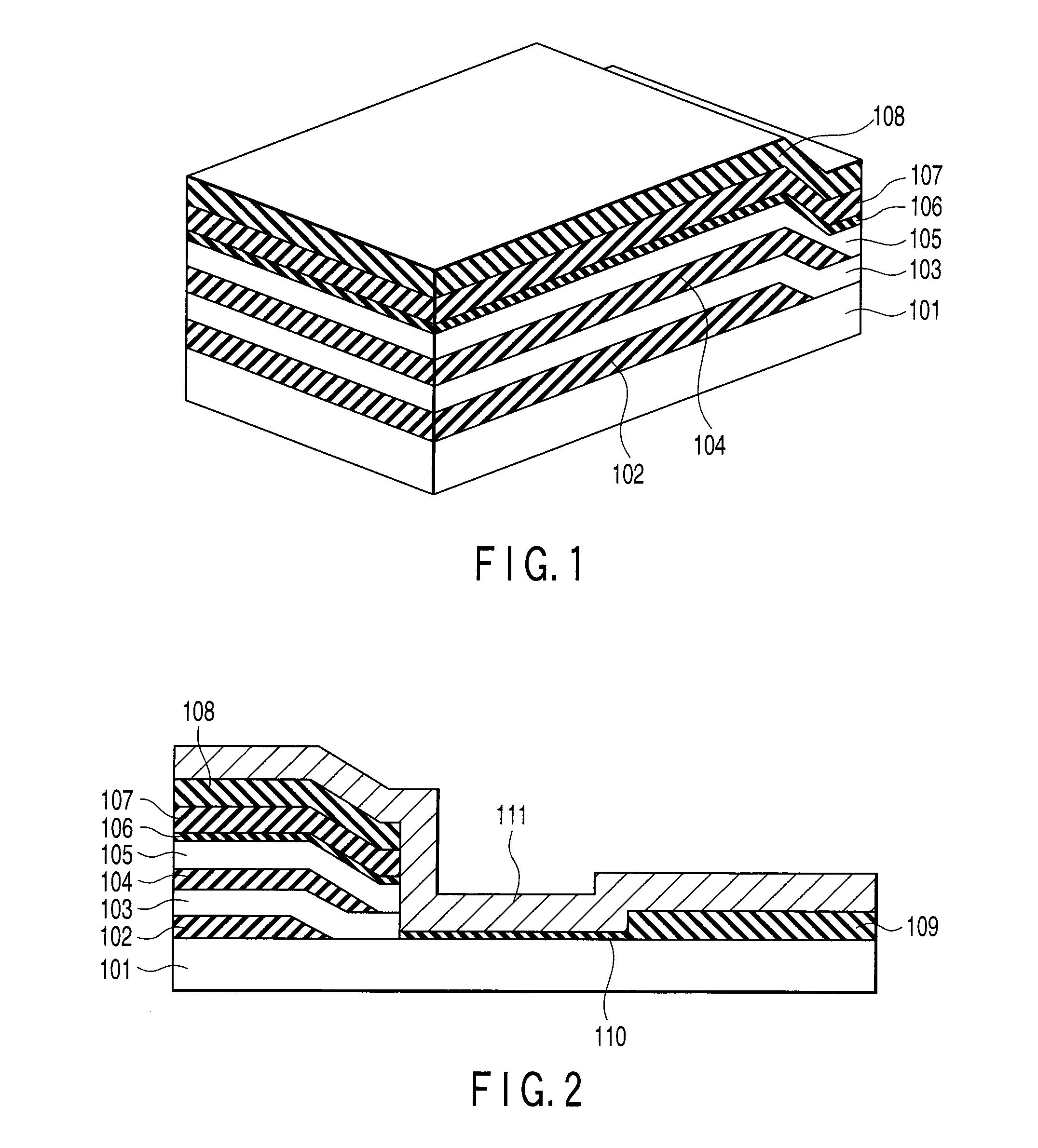Semiconductor Memory and Method of Manufacturing the Same
a technology of semiconductors and memory, applied in the field of semiconductor memory, can solve the problems of increasing the difficulty of flash memory further scaling, increasing the demand for future scaling, and many problems to be solved
- Summary
- Abstract
- Description
- Claims
- Application Information
AI Technical Summary
Problems solved by technology
Method used
Image
Examples
first embodiment
[0095]Each of FIGS. 1 to 7 is a perspective, sectional, or plan view showing a semiconductor memory (flash memory) according to the first embodiment of the present invention in a predetermined main manufacturing step.
[0096]This embodiment is directed to a two-layered memory in which single-crystal silicon layers serving as AA regions are formed by solid-phase epitaxial growth.
[0097]First, as shown in FIG. 1, a silicon thermal oxide film 102 serving as an interlayer dielectric (ILD) is formed to have a thickness of, e.g., about 50 nm on a semiconductor substrate 101. Then, the conventional lithography technique and etching technique are used to expose portions of the substrate as seeds of solid-phase growth. An amorphous silicon film about, e.g., 60 nm thick is formed on the entire surface of the substrate. Subsequently, annealing is performed to cause solid-phase epitaxial growth of the amorphous silicon film from the exposed portions of the substrate, thereby forming a single-cryst...
second embodiment
[0109]Each of FIGS. 8 to 13 is a perspective or sectional view showing a semiconductor memory (flash memory) according to the second embodiment of the present invention in a predetermined main manufacturing step.
[0110]This embodiment is directed to a four-layered memory in which single-crystal silicon layers serving as AA regions are formed by sequentially stacking and growing epitaxial silicon and epitaxial silicon germanium, and removing the silicon germanium films by selective etching.
[0111]First, as shown in FIG. 8, a first epitaxial silicon germanium film 202 about, e.g., 50 nm thick, first epitaxial silicon film 203 about, e.g., 60 nm thick, second epitaxial silicon germanium film 204 about, e.g., 50 nm thick, second epitaxial silicon film 205 about, e.g., 60 nm thick, third epitaxial silicon germanium film 206 about, e.g., 50 nm thick, third epitaxial silicon film 207 about, e.g., 60 nm thick, fourth epitaxial silicon germanium film 208 about, e.g., 50 nm thick, and fourth ep...
third embodiment
[0122]Each of FIGS. 14 to 19 is a perspective or sectional view showing a semiconductor memory (flash memory) according to the third embodiment of the present invention in a predetermined main manufacturing step.
[0123]This embodiment is directed to a four-layered memory similar to the second embodiment, but gate electrodes are processed by using the CMP technique.
[0124]First, as shown in FIG. 14, following the same procedure as in the second embodiment, four epitaxial silicon germanium films 302 and four epitaxial silicon films 303 are alternately stacked on a semiconductor substrate 301, and a silicon nitride film 304 and plasma CVD silicon oxide film 305 are formed on the layered epitaxial films. Then, the conventional lithography technique and etching technique are used to expose the end portions of the layered epitaxial films in a cell portion, and an epitaxial silicon film 306 is formed on the exposed portions. The silicon nitride film 304 and plasma CVD silicon oxide film 305 ...
PUM
 Login to View More
Login to View More Abstract
Description
Claims
Application Information
 Login to View More
Login to View More - R&D
- Intellectual Property
- Life Sciences
- Materials
- Tech Scout
- Unparalleled Data Quality
- Higher Quality Content
- 60% Fewer Hallucinations
Browse by: Latest US Patents, China's latest patents, Technical Efficacy Thesaurus, Application Domain, Technology Topic, Popular Technical Reports.
© 2025 PatSnap. All rights reserved.Legal|Privacy policy|Modern Slavery Act Transparency Statement|Sitemap|About US| Contact US: help@patsnap.com



